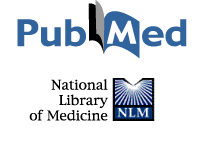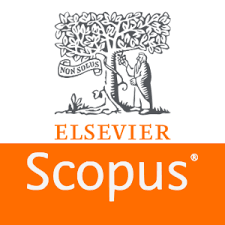MANAGING DJ STENT RELATED SYMPTOMS- TAMSULOSIN VS OXYBUTYNIN VS THEIR COMBINATION
DOI:
https://doi.org/10.55519/JAMC-01-13328Keywords:
DJ stent; Endourology; Stent related symptoms; Alpha blockers; AnticholinergicsAbstract
Background: Double J (DJ) stent insertion is a vital procedure in urology, used for urinary diversion, drainage, or support during reconstruction. Common indications include urolithiasis, ureteral strictures, pyeloplasty, or other reconstructive surgeries. Despite its benefits, DJ stenting often leads to stent-related symptoms due to its nature as a foreign object. These symptoms are evaluated using the Ureteral Stent Symptom Questionnaire (USSQ). Various medications, such as alpha blockers and antimuscarinics, have been used to mitigate these effects. This study compares the efficacy and side effects of Tamsulosin (alpha blocker), Oxybutynin (antimuscarinic), their combination, and conservative measures. Methods: A total of 216 patients undergoing unilateral 4.7 Fr DJ stenting for urolithiasis or reconstructive procedures were enrolled and divided into four groups (n=54 each): Group A (Oxybutynin), B (Tamsulosin), C (combination), and D (conservative). Patients under 18, with positive urine cultures, bilateral stents, or who declined participation were excluded. Symptom scores were recorded at 1st and 4th postoperative weeks using USSQ. Results: Combination therapy showed the best symptom control at week 1 (83.3%), while Tamsulosin alone was less effective initially (52.3%, p=0.001). At week 4, Oxybutynin and Tamsulosin groups had similar scores (mean: 39 vs. 40.4). Conservative management resulted in higher symptom scores; 5.5% of these patients required further intervention. Patients with constipation, positive cultures, or those treated for urolithiasis reported worse symptoms across all groups. Conclusion: Combination therapy with Tamsulosin and Oxybutynin offers superior relief from DJ stent-related symptoms compared to monotherapy or conservative approaches.
References
1. Muslumanoglu AY, Fuglsig S, Frattini A, Labate G, Nadler RB, Martov A, et al. Risks and benefits of postoperative Double J stent placement after ureteroscopy: results from the Clinical Research Office of Endourological Society ureteroscopy global study. J Urol 2017;31(5):446–51.
2. Nestler S, Witte B, Schilchegger L, Jones J. Size does matter: ureteral stents with a smaller diameter show advantages regarding urinary symptoms, pain levels and general health. J Endourol 2020;38(4):1059–63.
3. Betschart P, Zumstein V, Buhmann MT, Altenried S, Babst C, Müllhaupt G, et al. Symptoms associated with long term Double J ureteral stenting and influence of biofilms. Urol Res 2019;134:72–8.
4. Bosio A, Alessandria E, Agosti S, Vitiello F, Vercelli E, Bisconti A, et al. Pigtail suture stents significantly reduce stent related symptoms compared to conventional Double J stents: a prospective randomized trial. Eur Urol Open Sci 2021;29:1–9.
5. Manilal A, Dharan KS, Mathew A, Ramasami MP. The clinical and biochemical profile of patients with urolithiasis coming to the nephrology department of this tertiary care centre in South India. J Med Sci Clin Res 2020;8(2):167–76.
6. Aggarwal SP, Priyadarshi S, Tomar V, Yadav SS, Gangkak G, Vyas N, et al. A randomized controlled trial to compare the safety and efficacy of tadalafil and tamsulosin in relieving Double J stent related symptoms. Adv Urol 2015;2015:592175.
7. Mirani KK, Ather MH. Translation and validation of the ureteral stent symptoms questionnaire in Urdu. Cureus 2022;14(8):e27764.
8. Balaji AR, Patnaik PP, Prakash JV, Vetrichandar S, Arasi KV, Paranjothi AK, et al. A study to compare the safety and efficacy of solifenacin, tamsulosin and tadalafil in relieving Double J stent related symptoms. Open J Urol 2020;10(3):42–51.
9. Kwon JK, Cho KS, Oh CK, Kang DH, Lee H, Ham WS, et al. The beneficial effect of alpha blockers for ureteral stent related discomfort: a systematic review and network meta analysis for alfuzosin versus tamsulosin versus placebo. BMC Urol 2015;15:55.
10. He F, Man L, Li G. Efficacy of α blocker in improving ureteral stent related symptoms: a meta analysis of both direct and indirect comparison. Drug Des Devel Ther 2016;10:1783–93.
11. Lu Y, Li Q, Zou Q, Cui Y. Mirabegron and antimuscarinics for treating ureteral stent related symptoms: a systematic review and meta analysis of RCTs. Front Pharmacol 2023;14:1266636.
12. Yudha A, Rasyid N. The effect of antimuscarinic drug towards LUTS and quality of life in patients after Double J stent insertion. BJU Int 2014;114(1):12–6.
13. Salih EM, Koritenah AK, Yehya M, Mourad MM. The efficacy of S 1A blocker (tamsulosin), antimuscarinic (solifenacin) and their combination in the management of Double J stent related lower urinary tract symptoms: a randomized controlled study. Afr J Urol 2021;27:1–6.
14. Maldonado Ávila M, Garduño Arteaga L, Jungfermann Guzman R, Manzanilla García H, Rosas Nava E, Procuna Hernandez N, et al. Efficacy of tamsulosin, oxybutynin, and their combination in the control of Double J stent related lower urinary tract symptoms. Int Braz J Urol 2016;42(3):487–93.
15. Sivalingam S, Streeper NM, Sehgal PD, Sninsky BC, Best SL, Nakada SY. Does combination therapy with tamsulosin and tolterodine improve ureteral stent discomfort compared with tamsulosin alone? A double blind, randomized, controlled trial. J Urol 2016;195(2):385–90.
16. Jaworski P, Mello GF, Ferreira GM, Oliveira MH, Fraga Rd. Mirabegron as effective as oxybutynin for ureteral stent symptoms. Rev Assoc Med Bras (1992) 2021;67(12):1793–7.
17. Ho CH, Tai HC, Chang HC, Hu FC, Chen SC, Lee YJ, et al. Predictive factors for ureteral Double J stent related symptoms: a prospective, multivariate analysis. J Formos Med Assoc 2010;109(11):848–56.
18. Boeykens M, Keller EX, Bosio A, Wiseman OJ, Contreras P, Ventimiglia E, et al. Impact of ureteral stent material on stent related symptoms: a systematic review of the literature. Eur Urol Open Sci 2022;45:108–17.
19. Kati B, Yakupogullari Y, Polat EC, Pelit ES, Güneş A. Is there any relationship between ureteral DJ stent colonization and lower urinary tract symptom severity? J Turgut Ozal Med Cent 2018;25:7–
Downloads
Published
How to Cite
Issue
Section
License
Copyright (c) 2025 Umber Rasheed, Sherjeel Saulat, Ashba Mushtaque, Muhammad Osama, Anil Kumar, Mansur Ejaz

This work is licensed under a Creative Commons Attribution-NoDerivatives 4.0 International License.
Journal of Ayub Medical College, Abbottabad is an OPEN ACCESS JOURNAL which means that all content is FREELY available without charge to all users whether registered with the journal or not. The work published by J Ayub Med Coll Abbottabad is licensed and distributed under the creative commons License CC BY ND Attribution-NoDerivs. Material printed in this journal is OPEN to access, and are FREE for use in academic and research work with proper citation. J Ayub Med Coll Abbottabad accepts only original material for publication with the understanding that except for abstracts, no part of the data has been published or will be submitted for publication elsewhere before appearing in J Ayub Med Coll Abbottabad. The Editorial Board of J Ayub Med Coll Abbottabad makes every effort to ensure the accuracy and authenticity of material printed in J Ayub Med Coll Abbottabad. However, conclusions and statements expressed are views of the authors and do not reflect the opinion/policy of J Ayub Med Coll Abbottabad or the Editorial Board.
USERS are allowed to read, download, copy, distribute, print, search, or link to the full texts of the articles, or use them for any other lawful purpose, without asking prior permission from the publisher or the author. This is in accordance with the BOAI definition of open access.
AUTHORS retain the rights of free downloading/unlimited e-print of full text and sharing/disseminating the article without any restriction, by any means including twitter, scholarly collaboration networks such as ResearchGate, Academia.eu, and social media sites such as Twitter, LinkedIn, Google Scholar and any other professional or academic networking site.










